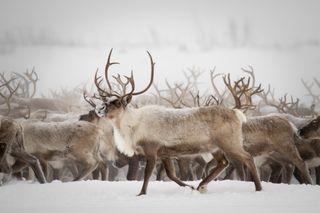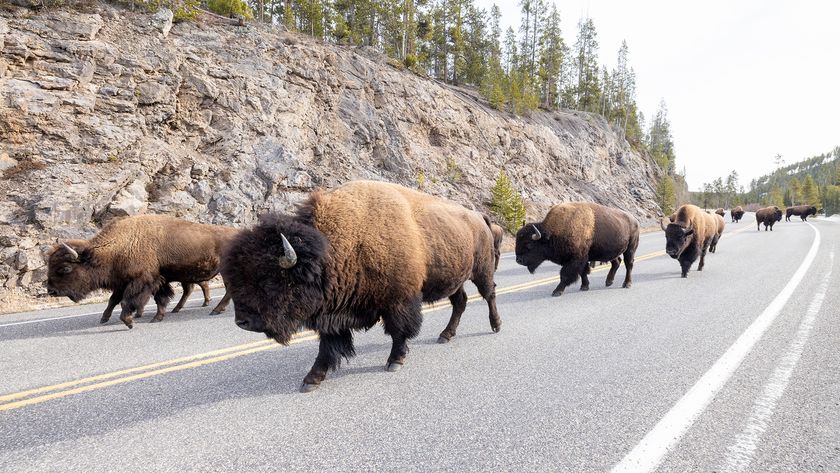
Are Santa's reindeer males?
Santa's sleigh-pullers, including Vixen and Cupid, are likely females.
Are Santa's reindeer males? Impossible, scientists say.
Here's why: Here on the ground, male reindeer shed their antlers at the end of the mating season in early December, while females sport their thinner antlers throughout the winter.
Sounds like Rudolph and the gang were all gals.
Related: Album: Animals' dazzling headgear
"It appears that way," said physiologist Perry Barboza of the Institute of Arctic Biology, University of Alaska at Fairbanks, who studies reindeer and their closest cousins, caribou. Scientists consider reindeer and caribou the same species.
Santa, turns out, did some savvy hiring of his prancing parade. These antlered deer (Rangifer tarandus) are used to the cold. They live in Alaska, Canada, Scandinavia and Russia, where they graze on tundra plants. So, even though pudgy Santa must bundle himself beneath a red-velvet suit, sleigh-pulling reindeer are naturally covered with hollow hairs that trap in air and keep them well-insulated. Plus, their circulatory systems keep the cooler blood in the reindeer's limbs from drawing heat from the warm blood in their core body.
While all reindeer would be equipped for an Arctic journey, though a flightless one, females might have the edge over their male counterparts.
Sign up for the Live Science daily newsletter now
Get the world’s most fascinating discoveries delivered straight to your inbox.

When the Christmas journey rolls around, male reindeer carry as low as 5 percent body fat, having lost much of their fatty stores during the energy-sapping mating season.
Female reindeer, however, enter winter with about 50 percent body fat, making them "seals on hooves," Barboza said. The fat, which can be a couple of inches thick on their rumps, keeps the reindeer toasty in temperatures as low as minus 45 degrees Fahrenheit (minus 43 degrees Celsius). Which leaves us wondering, however, how they can be "faster than eagles," as legend has it.
Santa's reindeer have another hoof up on other animal sleigh pullers: They can see in the ultraviolet range of the electromagnetic spectrum, something humans (and Santa) can't do. This vision ability will come in handy in the winter, said researchers who published a review of reindeer research in the journal Frontiers for Young Minds in 2015, as the sun is low on the horizon during Christmas season with lots of light scattering from the atmosphere. Result? The light that hits our eyes is mainly blueish and ultraviolet, the researchers said.
In addition, reindeer eyes are equipped with a reflective tissue behind the retina that reflects light back through the retina, enhancing night vision, said researchers in 2013 who found this layer of tissue changes color through the seasons. In Arctic summers, when there's constant daylight, the tissue is yellow and so reflects a bunch of light back out of the eyes; in winter, when there's complete darkness, the tissue turns a deep blue — a color that reflects less incoming light out of the eye, researchers from the University College London said in a statement. The researchers published their results in the journal Proceedings of the Royal Society B.
Editor's Note: This article was updated in 2017 with new research on reindeer.
Originally published on Live Science.












